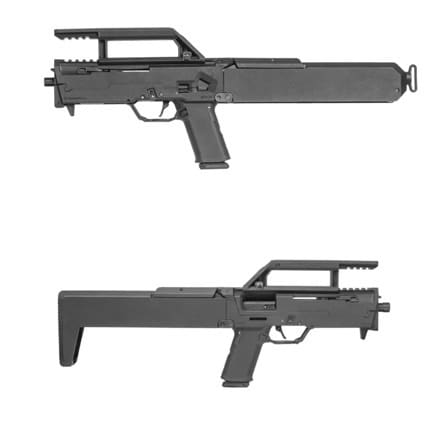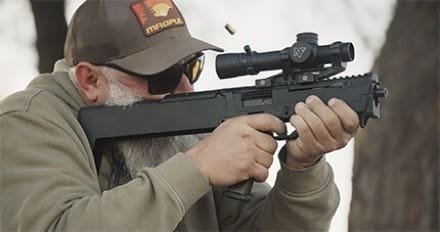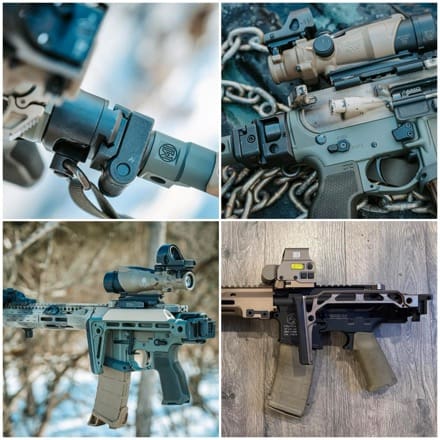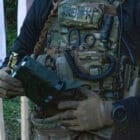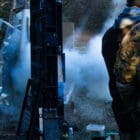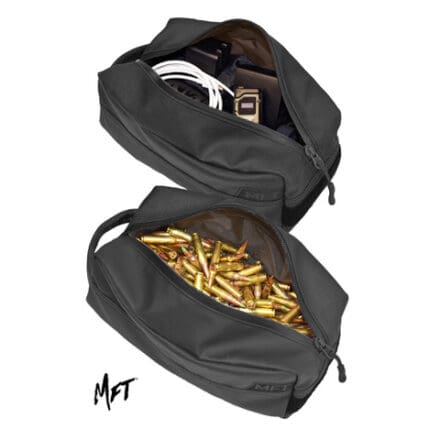January 17, 2025 – KGM Suppressors is proud to announce the official release of the highly anticipated FDP Suppressor model by FD Suppressors. Following a groundbreaking partnership revealed in 2024, the FDP Suppressor is set to enter production in Q1 2025, with shipments beginning in April 2025. This innovative product is a unique and capable suppressor that does not require a threaded barrel on a pistol host, instead attaching via a patented method that uses the accessory rails incorporated into a pistol’s frame.
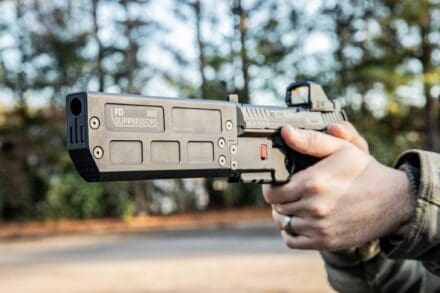
As a part of US commercialization, the FDP Suppressor has a newly redesigned and modular mounting interface, specifically engineered to meet U.S. regulatory standards. This design allows users to have multiple unregulated adapters, enabling seamless compatibility with different host platforms. This updated design of the FDP Suppressor has been reviewed by the BATFE Firearms and Ammunition Technology Division (FATD), with approval received in December 2024.
MSRP for the FDP Suppressors is $750, with additional adapters available for an MSRP of $165.
Launch Configurations
The initial release of the FDP Suppressor includes adapters for the following host platforms:
• Glock 17 Gen 5
• Glock 17 Gen 3/4
• Glock 19 Gen 5/19X/45
• Glock 19 Gen 3/4
• HK VP9
Key Design Features
• Fast attach and removal design that does not require a threaded barrel.
• Does not require a Nielson device/booster for cycling.
• Does not affect cycling and reliability of the pistol, allowing maximum ammunition compatibility.
• Has minimal to no point-of-impact shift between suppressed and unsuppressed.
• Does not interfere with the vision of pistol sights.
• Offers comparable sound suppression to conventional pistol suppressors.
• Easy take-apart design for cleaning.
“The FDP Suppressor model is a uniquely capable suppressor that we are excited to bring to the US market,” said Sean Murphy, VP of Product Management. “After we signed the partnership with Fischer Development to bring their design to the US, we found a few design changes needed to meet US regulations. We are excited to have an approved modular mounting system so that users can customize their suppressor setup to fit their preferred host. Work is already underway for additional adapters that fit other popular pistol platforms.”
Availability and Ordering
The FDP Suppressor and its launch adapters will be available for pre-order starting February 2025, with shipments commencing in April 2025. Existing KGM Suppressors dealers will have access to this product, and interested FFL/SOTs are encouraged to inquire about dealer pricing. Additional adapter designs are already in development, ensuring continued expansion of compatibility options in the near future.
See the FDP Suppressor at SHOT Show in the KGM Suppressors booth, located in Caesar’s Forum at booth 75223.
For more information about the FDP Suppressor, its features, and availability, visit www.fd-suppressors.com or contact info@fd-suppressors.com.

